|
 Secure Site
Secure Site
|
 |
Archive for the 'Yoga Timers by Now & Zen' Category
 Choose a Soothing Chime Timer for Your Mindfulness Practice - Utgarwa Beauty Mindfulness
“Mindfulness” is the spiritual practice of being aware of your present moment. World famous Zen monk Thich Nhat Hanh has developed the use of a bowl-gong in a practice he calls the “mindfulness bell.” When you hear the sound of the mindfulness bell, you are invited to take a moment to breathe in and out and center yourself in the present. This practice allows the sound of the bowl-gong to periodically connect you to the peace and tranquility that resides inside you right now. This delightful practice reduces stress and improves your overall health.
Mindfulness practice, is increasingly being employed in Western psychology to alleviate a variety of mental and physical conditions.
Scientific research into mindfulness generally falls under the umbrella of positive psychology. Research has been ongoing over the last twenty or thirty years, with a surge of interest over the last decade in particular. In 2011, The Natural Institute for Health’s National Center for Complementary and Alternative Medicine (NCCAM) released the findings of a study wherein magnetic resonance images of the brains of 16 participants 2 weeks before and after mindfulness meditation practitioners, joined the meditation program were taken by researchers from Massachusetts General Hospital, Bender Institute of Neuroimaging in Germany, and the University of Massachusetts Medical School. It concluded that “..these findings may represent an underlying brain mechanism associated with mindfulness-based improvements in mental health. [From Wikipedia]
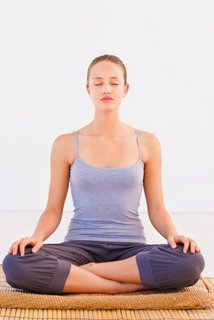 Choose a Yoga & Meditation Timer with Soothing Chimes
The Zen Timepiece can serve as a mindfulness bell in two ways: it can be set to strike on the hour (providing an hourly moment of stillness), or it can be set to strike at a programmed interval, such as every 20 minutes, or even every three hours.
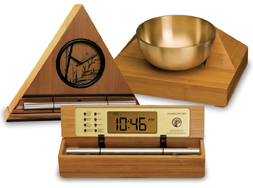 Soothing Chime Meditation & Yoga Timers from Now & Zen, Inc. Now & Zen – The Meditation
& Yoga Timer Store
1638 Pearl Street
Boulder, CO 80302
(800) 779-6383
Posted in Bamboo Chime Clocks, Meditation Timers, Meditation Tools, mindfulness practice, Well-being, yoga, Yoga Timer, Yoga Timers by Now & Zen, zen
 Meditation Practice - Try a Singing Bowl Meditation Timer for Your Stillness Practice Nearly 40 percent of Americans use some form of complementary and alternative medicine, according to the 2007 National Health Interview Survey. These practices include meditation, yoga, acupuncture and other types of mind-body-practices. And now, many are receiving the support of conventional doctors who have seen apparent benefits in some of their patients.
Some studies suggest meditation can help lower blood pressure and even improve immune function.
“There are a lot of great benefits for people that are starting to meditate and we find that that’s cumulative,” said Harden. “So the more you meditate, the more the benefits last.”
Meditation has more recently been tried to treat eating disorders, alcoholism, psoriasis, and even impotence. More than two dozen medical centers across the country, including specialized cancer centers, have attached complementary medicine centers, or provide meditation or other mind-body classes.
However, many of these uses of meditation are experimental, and the results vary by each patient. Many experts say meditation is more likely to treat medical conditions successfully when it is used in conjunction with conventional therapies.
Although meditation can be done in almost any context, practitioners usually employ a quiet, tranquil space, a meditation cushion or bench, and some kind of timing device to time the meditation session. Ideally, the more these accoutrements can be integrated the better. Thus, it is conducive to a satisfying meditation practice to have a timer or clock that is tranquil and beautiful. Using a kitchen timer or beeper watch is less than ideal.
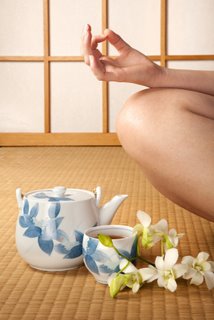 Meditation for Well-being, Choose a Gentle Zen Timer to End Your Practice
And it was with these considerations in mind that we designed our digital Zen Alarm Clock and practice timer. This unique “Zen Clock” features a long-resonating acoustic chime that brings the meditation session to a gradual close, preserving the environment of stillness while also acting as an effective time signal.
adapted from worldnews.com by Lara Salahi & Catherine Cole
Now & Zen – The Zen Timer Store
1638 Pearl Street
Boulder, CO 80302
(800) 779-6383
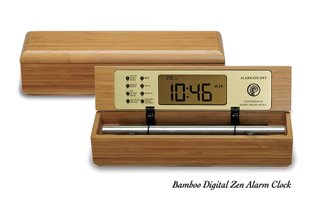 It's exquisite sounds summon your consciousness out of your meditative state with a series of subtle gongs. Once you experience the Zen Timepiece's progressive tones, you'll never want to meditate any other way.
Posted in Walking Meditation, Well-being, Yoga Timer, Yoga Timers by Now & Zen, zen
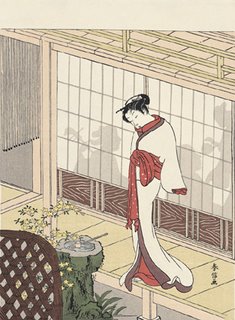 Soothing Sound Timer and Alarm Clock - Harunobu Suzuki, Beauty at the Veranda In the yogic tradition, breath is the foundation of all life, the sustaining connection between body and spirit. A telling indicator of health and mood, breath puts us in closer touch with ourselves on every level. Through pranayama, or breath control, we can manage our emotions, gain clarity — and take greater control of our lives. “The way you breathe is a metaphor for the way you live your life,” says Amy Weintraub, Kripalu yoga-teacher mentor and author of Yoga for Depression. “Are you taking little sips of breath as though you don’t deserve to take up space on the planet, or are you breathing full and standing tall?” Try this pranayama exercise once a day or whenever you need to.
Ocean-Sounding Victory Breath
This calming breath, also known as ujjayi breath, has a settling effect on the central nervous system while increasing mental alertness and clarity — making it very effective for those suffering from anxiety and depression, says Weintraub. “Even three ujjayi breaths can cause a complete paradigm shift in your mood. This is a great exercise to do before meditation or anytime to help reduce stress.”
 Soothing Sounds Meditation Timer and Alarm Clock with Acoustic Chime 1. Inhale through your nostrils with a slight constriction at the back of your throat so the breath travels over the glottis, making a soft but audible sound. Think ocean waves rolling over pebbles. Imagine that you are actually breathing from the back of your throat.
2. Exhale through your nostrils, pulling the belly toward your spine. Empty your lungs completely. Begin again, slowly.
3. Continue to breathe deeply and audibly on the inhalation and exhalation. Allow the belly, the rib cage, and the upper chest to expand with each inhalation. Let the breath be like a lullaby to yourself.
Use our unique “Zen Clock” which functions as a Yoga & Meditation Timer. It features a long-resonating acoustic chime that brings your meditation or yoga session to a gradual close, preserving the environment of stillness while also acting as an effective time signal.
Our Yoga Timer & Clock can be programmed to chime at the end of the meditation or yoga session or periodically throughout the session as a kind of sonic yantra. The beauty and functionality of the Zen Clock/Timer makes it a meditation tool that can actually help you “make time” for meditation in your life. Bring yourself back to balance.
adapted from body + soul, April/May 2005 Terri Trespicio
 Soothing Sounds Alarm Clock and Meditation Timer from Now & Zen, Inc. Soothing Sounds Alarm Clock & Timer Store
Now & Zen, Inc.
1638 Pearl Street
Boulder, CO 80302
(800) 779-6383
Posted in Bamboo Chime Clocks, Meditation Timers, Meditation Tools, mindfulness practice, Progressive Awakening, yoga, Yoga Timer, Yoga Timers by Now & Zen, Zen Timepiece by Now & Zen, Zen Timers
 Eisen Keisai, Woman Getting out of a Mosquito Net - Soothing Sounds Alarm Clocks by Now & Zen Power Hara Breathing Exercise:
The yogis understood the connection between breath and power. This energizing breath combines a spinal twist and vocal sounds to release tension and build energy. For an even more invigorating experience, try this breathing exercise outside first thing in the morning.
1. Bring your hands to your shoulders with your elbows pointed out. Stand with your feet slightly wider than hip width.
2. Twist to the left as you inhale, filling your lungs halfway, and then twist to the right as you complete the inhalation.
3. Twist left as you exhale, making a powerful “ha” sound as you extend your right arm forcefully to the left, like a punch.
4. Twist right to finish exhaling, again with a “ha,” punching your left arm out to the right. Make the vocal sound from deep in your gut, not just from your throat.
5. Practice 10 full rounds, then relax, arms by your sides. Close your eyes; feel your awakened energy. Breathe normally.
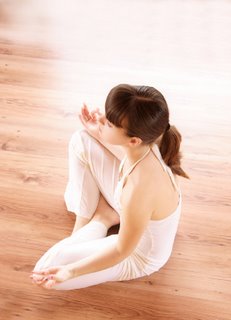 Body and soul in balance - Choose a Soothing Sounds Alarm Clock by Now & Zen Use our unique “Zen Clock” which functions as a Yoga & Meditation Timer. It features a long-resonating acoustic chime that brings your meditation or yoga session to a gradual close, preserving the environment of stillness while also acting as an effective time signal. Our Yoga Timer & Clock can be programmed to chime at the end of the meditation or yoga session or periodically throughout the session as a kind of sonic yantra. The beauty and functionality of the Zen Clock/Timer makes it a meditation tool that can actually help you “make time” for meditation in your life. Bring yourself back to balance.
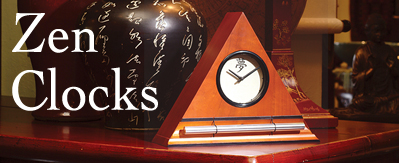 Soothing Sounds Alarm Clock with Chime Now & Zen’s Soothing Sounds Alarm Clock Headquarter Store
1638 Pearl Street
Boulder, CO 80302
(800) 779-6383
Posted in Chime Alarm Clocks, Meditation Timers, Meditation Tools, mindfulness practice, yoga, Yoga Timer, Yoga Timers by Now & Zen, Zen Timepiece by Now & Zen, Zen Timers
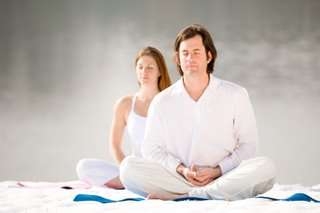 mind-body therapies help your heart Research shows that the stress-inflammation cycle is as detrimental to your heart as a plate full of the cheesiest fettuccine Alfredo. “Stress hormones, such as adrenaline and cortisol, cause the arteries to constrict, which results in a rise in blood pressure and decrease in blood flow,” Moyad explains. Less blood flow means less oxygen circulating through the body to combat free radicals—unstable cells that can damage healthy tissues. “We know now that bad LDL cholesterol only becomes threatening when levels get so high that it binds with free radicals,” Moyad says. When this happens, LDL changes structure and gets absorbed by the arterial walls’ lining, resulting in plaque buildup, or atherosclerosis. Such tissue damage causes the immune system to go into overdrive, triggering inflammation. Reduce your risk with effective mind-body therapies like meditation, yoga, exercise or massage.
The Digital Zen Clock & Meditation Timer serves as a countdown and interval timer for yoga, meditation, bodywork, etc.; and it can also be set to chime on the hour as a tool for “mindfulness.”
adapted from Natural Solutions Magazine, January 2010 by Kate Hanley
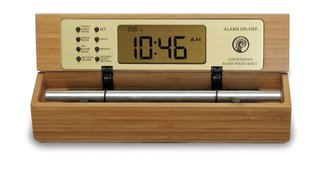 bamboo meditation timer and natural alarm clock with gentle chime Now & Zen’s Clock and Meditation Timer Shop
1638 Pearl Street
Boulder, CO 80302
(800) 779-6383
Posted in Beauty, Chime Alarm Clocks, intention, Japanese Inspired Zen Clocks, Meditation Timers, Meditation Tools, mindfulness practice, Natural Awakening, nature, Well-being, yoga, Yoga Timer, Yoga Timers by Now & Zen, Zen Timers
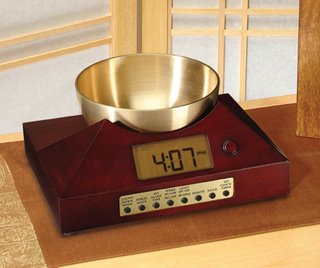 Zen Timepiece with brass singing bowl Singing bowls are unique because they are multiphonic instruments, producing multiple harmonic overtones at the same time. The overtones are a result of using an alloy consisting of multiple metals, each producing its own overtone.
New bowls can also produce multiple harmonic overtones if they are high quality bronze, but many are made from a simpler alloy and produce only a principal tone and one harmonic overtone.
adapted from wikipedia.org
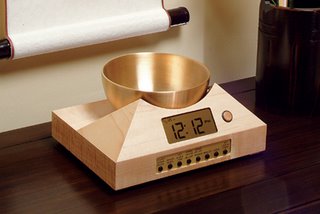 Zen Timepiece, a brass singing bowl clock and timer
Our Zen Timepiece’s acoustic 6-inch brass bowl-gong clock is the world’s ultimate alarm clock, practice timer, and “mindfulness bell.”
It fills your environment with beautifully complex tones whenever it strikes. In the morning, its exquisite sounds summon your consciousness into awakening with a series of subtle gongs that provide an elegant beginning to your day. Once you experience the Zen Timepiece’s progressive awakening, you’ll never want to wake up any other way. It also serves as the perfect meditation timer. Available in 5 wood styles, including bamboo (shown).
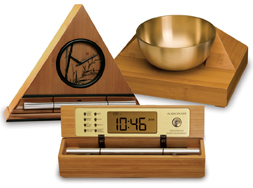 Singing Bowl Alarm Clock Now & Zen’s Singing Bowl Alarm Clock Shop
1638 Pearl Street
Boulder, CO 80302
(800) 779-6383
Posted in Chime Alarm Clocks, Japanese Inspired Zen Clocks, Meditation Tools, Now & Zen Alarm Clocks, Progressive Awakening, Well-being, Yoga Timer, Yoga Timers by Now & Zen, Zen Timepiece by Now & Zen, Zen Timers
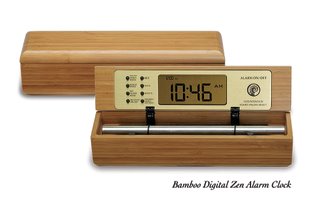 Yoga timers made from bamboo The Digital Zen Clock is the perfect companion for a natural lifestyle. Its long-resonating acoustic chime set in a solid hardwood case adds tranquility and aesthetic pleasure to any environment or activity. Used as an alarm clock, its gradually-increasing chime progression sequence begins your day with grace and beauty. As a timing device the Digital Zen Clock’s acoustic chime is unsurpassed for yoga, meditation, bodywork, or any practice.
 yoga and meditation timers Now & Zen
1638 Pearl St.
Boulder, CO 80302
(800) 779-6383
Posted in Bamboo Chime Clocks, yoga, Yoga Timer, Yoga Timers by Now & Zen
 yoga at home I got into yoga as a college student on a typically tight budget. To save money I decided to memorize my favorite sequence and practice at home. It was love at first Sun Salute. But not so much in class, where I obediently followed along, trying my best to keep up with a fast-moving flow, diligently taking the inevitable corrections, and silently cursing the woman next to me who was clearly related to Gumby.
Practicing at home gave me the time and the freedom to play in the poses and see how my body reacted. “You can feel when a pose is right and when it’s a little off,” says Barbara Benagh, a Boston yoga instructor and home practice veteran. “If it doesn’t feel right, it doesn’t matter how good it looks.” My first uncertain, bumbling adjustments eventually guided me to a better understanding of yoga as well as my own strengths, limitations, and needs.
Think of yoga, especially a home practice, as a learning process. There will be fits and starts, but you’re not alone in your struggle for consistency. “Sometimes the challenge is doing it at all,” admits Benagh. But once you step on the mat, you can let the practice take shape. Whether you stick to a specific sequence or just muddle through a few of your favorite poses, you’re still doing yoga. Give yourself permission to explore the poses that attract you and, just as importantly, those that you resist. Tune into how your breath feels, where your mind goes, and the sensations that each pose invites. Avail yourself of books, DVDs, and websites (see “At-home helpers” on page 58 for suggestions), and go at your own pace. Once in a while get a yoga checkup by going to a class that emphasizes adjustments or splurging on a yoga private session.
 yoga at home, use a yoga timer tool from Now & Zen The bonuses of a steady practice may surprise you—improvements in your health, strength, flexibility, and general quality of life. A new study published in the Journal of Alternative and Complementary Medicine reports that just one week of daily yoga practice increases spinal flexibility and decreases pain in people suffering from chronic low back pain. Plus you’ll strengthen your body’s ability to fight disease: A 2007 study analyzing antioxidant levels in the blood found that study participants who had practiced yoga for six months had significantly higher levels of free radical–fighting antioxidants in their blood than the control group.
My home practice was born of financial limitation, but I’ve stuck with it for many different reasons: self-nurturing when I’m feeling down or during that-time-of-the-month, a busy schedule, convenience, a chance to work on difficult poses in the privacy of my own home (with no Gumbies around). Whatever inspires you to begin a home practice, this easy-to-follow guide can help you succeed.
The yoga of distraction
You don’t need a private studio to have a successful home practice. But it does help to create a space you can come back to where you feel comfortable and focused. Distracted by a cluttered room? Take five minutes to tidy up before stepping on the mat; it can be a great way to center yourself for each session. Have trouble staying put? Benagh suggests you use music—just practice for the length of one album or playlist—to provide some structure as well as motivation to stick it out. But she reminds us that, “one element of yoga is discipline and exertion. Be patient with the process, and you will build stamina by continuing to persevere even when you get discouraged.”
 Kid Yoga Lotus Pose Focus on the breath
Yoga’s mindful breathing sets it apart from most other forms of exercise. This diaphragmatic or belly breathing begins in the abdomen rather than the chest, pulling the air deeper into the lungs, which fosters more complete oxygen–carbon dioxide exchange. To tune in to your breath, sit comfortably, and rest your hand on your belly. As you inhale, feel your belly filling up with breath; as you exhale, allow your belly to empty.
By linking your inhale and exhale to your movements, you can use the breath as a powerful guide for your yoga practice. Pay attention to the quality of the breath. If it feels jagged, you may be working too hard. Ease up or go into Child’s Pose until you feel ready to move again. If your breath becomes very slow or lazy, you may be losing focus. Challenge yourself to stay more alert and active in your practice. If at any point you lose track of your breathing, that’s OK. Just notice it, and come back.
Build a sequence
A balanced sequence of poses moves your body and spine through its full range of motion—circulating oxygen-rich blood, eliminating toxins, stretching and lubricating the entire body. Every asana (body) falls into at least one, and sometimes several, of eight categories—standing, balancing, forward bends, backbends, hip openers, twists, inversions and restoratives. Each type offers different benefits, challenges, and insights.
Standing postures ground your energy, revitalize the legs, improve balance and digestion, build bone density, and lubricate joints. * Balancing postures improve balance, build bone density, focus the mind, and strengthen the joints. * Backbends open the chest and heart, relieve depression, keep the spine supple, and energize body and mind. * Forward bends soothe the nervous system, release tension in the back, and promote sound sleep. * Hip openers promote pelvic, prostate, and reproductive health and reduce sciatic pain. * Twists lubricate the spine and tone and detoxify the organs. * Inversions tone and relax the organs, recirculate blood, center the mind, and improve concentration. * Restorative postures do exactly that: Restore mind and body and reduce stress and tension.
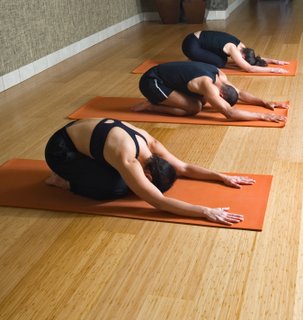 yoga practice The four Bs
* Blocks help you maintain proper alignment while you build strength and flexibility. * A belt supports you in restorative poses and helps you stay aligned and safe as you stretch. * A bolster supports your body in passive, restorative poses. * A blanket can be used in lieu of or in addition to a bolster to make you more comfortable and help you relax.
Now you’re ready to go. Try the following sequence, courtesy of yogis Rodney Yee and Colleen Saidman, creators of the Gaiam Yoga Club, an online community offering healthy home practices anyone can do.
1. Mountain Pose
(Tadasana)
How to: Stand with your feet parallel, heels slightly apart, and big toes touching. Broaden your collarbones, press your shoulder blades into the back to open up your chest, and place your arms by your sides. Lengthen through the sides of your waist, and balance your head over your shoulders, feeling a sense of ease (and no tension) in the neck. Breathe here for eight to 10 breaths.
standing pose
2. Tree Pose (Vrksasana)
How to: From Mountain Pose, bring your right foot up and press it against the inside of your left thigh or calf, or rest your right heel on the inside of your left ankle. Keep your hips facing the front and your right knee opening out to the side. Stay here for five to eight breaths; release your right leg to the floor and return to Mountain Pose. Repeat pose on the other side.
Variation: Hold on to the back of a chair or touch the wall for balance if you need to. Caution: Don’t rest your foot against your knee as this can cause strain in the joint.
standing; balance; hip opener
3. Standing Forward Bend
(Uttanasana)
How to: From Mountain Pose, exhale and fold from the hips (not the waist), and bring your hands to the floor beside your feet. Keep your knees lifted, relax the low back, and soften the belly. Stay here for five to eight breaths.
Variation: Rest your hands on blocks if they don’t reach the floor; bend your knees to avoid stress on your lower back. Caution: If you have sciatica, you may want to avoid this posture.
standing; forward bend; inversion
4. Downward-Facing Dog Pose (Adho Mukha Svanasana)
How to: From Standing Forward Bend, step your feet back, coming into a plank position (yoga push-up position—arms straight, shoulders over hands, and legs straight so that your body forms a flat plank). Exhale and lift your sit bones toward the ceiling, pressing into your palms and inner arms. Keep the kneecaps lifted; reach your heels toward the floor. Stay here for five to eight breaths, and work up to 15 breaths. Step your right foot between your hands, then your left foot, returning to Mountain Pose.
Variation: Rest your forehead on a block (to ease a headache, calm your nerves, or cool a hot flash).
standing; inversion
5. Triangle Pose (Trikonasana)
How to: From Mountain Pose, step your feet about 3 to 4 feet apart. Turn your left foot slightly inward and your right foot out 90 degrees; the heel of your right foot should be in line with the heel of your left. Stretch your arms out to the sides, lift up through the front of your thighs, and press your shoulder blades into your back to open your chest. Exhale, and keeping both sides of your waist long, extend your trunk to the right and bring your right hand down to your shin or a block. Stretch your left arm up to the ceiling. Look straight ahead or up at your left hand. Rotate your belly toward the ceiling. Hold for five to eight breaths. On an inhalation, lift up and turn your feet back to a parallel position. Repeat on your left side, then turn your toes forward and step back into Mountain Pose. Note: The object is to support and open the chest by keeping your spine and waist long. Don’t worry about bringing your hand all the way down to the floor.
Variation: Place a block on the outer edge of your right foot to support your hand.
standing; hip opener; twist
6. Extended Side Angle Pose
(Utthita Parsvakonasana)
How to: From Mountain Pose, step your feet out slightly wider than you did for Triangle Pose. Turn your right foot out 90 degrees and your left foot slightly inward. The heel of your left foot should line up with the heel of your right. Stretch your arms out to the sides, exhale, and bend your right knee so that your thigh is parallel to the floor. On your next exhale, extend your trunk to the right, keeping both sides of your waist long, and bring your right hand down to a block (or rest your elbow on your thigh). Stretch your left arm up over your left ear, rotate your belly toward the ceiling, and look up under your armpit. Breathe and hold this pose for five to eight breaths. Inhale as you lift up, and straighten your torso. Repeat on the left side and then step back into Mountain Pose.
Caution: Don’t do this pose if you have arthritis of the knee or very low blood pressure.
standing; hip opener; twist
7. Cobra Pose (Bhujangasana)
How to: Lie flat on your stomach, forehead on the floor. Bring your hands beside your chest so that your forearms are perpendicular to the floor and your elbows are tucked in to your sides. Inhale, lift up from your chest, elongating your waist and spreading your collarbones wide. (You should not feel a pinch in your lower back in this gentle backbend). Keep your legs active and pelvis on the mat. Hold for five to eight breaths. On an exhalation, release back into the floor, turn your head to the side and rest for a moment before repeating.
Caution: Do not do this pose if you are more than three months pregnant.
backbend
8. Bound Angle Pose (Baddha Konasana)
How to: Sit with your back straight and your belly lifted. Bend your legs, and bring the soles of your feet together in front of you, allowing your knees to open out to the side. Hold your ankles, and draw your heels toward your pubic bone. Gently lower your knees as far as possible. Put your hands on the floor behind you to sit up taller and encourage the natural curves of the spine. Stay here for eight to 10 breaths.
Variation: Sit with hips on a folded blanket or a bolster and feet on the floor if your knees come up higher than your waist. Place a block under each thigh.
hip opener 9. Simple Seated Twist Pose
(Parivrtta Sukhasana)
How to: Sit cross-legged on the mat. Lengthen through the sides of your waist and elongate your spine. Place you left hand on your right knee and bring your right hand to the floor behind you. Keeping your hips facing straight ahead, begin twisting to the right from your belly first, then your ribcage, chest, and shoulders. Look over your right shoulder. Stay here for five to eight breaths. Come back to the front and repeat on the other side.
Variation: Place a block behind you to support your hand; sit up on a folded blanket with your knees and feet on the floor.
Caution: Avoid this pose if you have a cold or congestion in your chest.
twist
10. One-Legged Forward Bend (Janu Sirsasana)
How to: With your legs stretched out in front of you, bend your left knee and place your left foot on the inside of your right leg, near your groin. Keeping the right leg straight, turn your abdomen and chest so your sternum is in line with the center of your right leg. Inhale and stretch up. Exhale as you reach your arms out in front of you, and fold your trunk forward over your right leg. Stay here for at least eight breaths or longer if you like.
Variation: If you have tight hamstrings, wrap a belt around the base of your right foot and hold onto it as you fold forward. For a more restorative pose, put a bolster on your outstretched leg and rest your head and arms on the bolster.
Caution: Don’t do this pose if you have sciatica.
forward bend; twist
11. Corpse Pose (Savasana)
How to: Lie on your back with your legs stretched out in front of you. Rest your arms at your sides, slightly away from your torso, palms facing up. Actively stretch your arms and legs away from you, then allow them to release completely. Close your eyes, and let everything relax. Let your breathing become natural and effortless. Rest here for five to 10 minutes.
Variations: Place a folded blanket or bolster under you knees to release the back muscles. Cover up with a blanket if you feel cold. You can also use an eye pillow to help the eyes and brain relax.
Use our unique “Zen Clock” which functions as a Yoga Timer. It features a long-resonating acoustic chime that brings your meditation or yoga session to a gradual close, preserving the environment of stillness while also acting as an effective time signal. Our Yoga Timer & Clock can be programmed to chime at the end of the meditation or yoga session or periodically throughout the session as a kind of sonic yantra. The beauty and functionality of the Zen Clock/Timer makes it a meditation tool that can actually help you “make time” for meditation in your life. Bring yourself back to balance.
Adapted from Natural Solutions Magazine, August 2008, by Nora Simmons
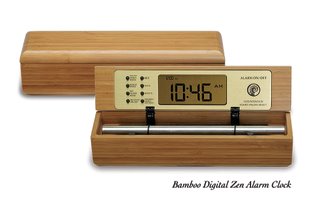 Bamboo Zen Chime Clocks & Yoga Timers Now & Zen – The Yoga Timer Store
1638 Pearl Street
Boulder, CO 80302
(800) 779-6383
Posted in Bamboo Chime Clocks, Chime Alarm Clocks, Now & Zen Alarm Clocks, Yoga Timer, Yoga Timers by Now & Zen
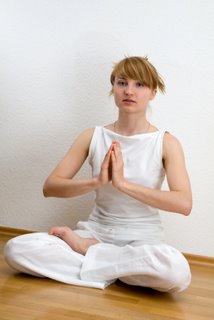 yoga when you are tired, yoga when you are wired... After a stressful day, yoga brings your body and
mind back into balance.
By Karen Macklin
We’ve all been there at the end of a long day: too exhausted to do anything substantial but too hyped up and jittery to really relax. Feeling simultaneously tired and wired happens more often than many of us would like, and it can be hard to know what kind of practice is best to do when you feel this way.
“The goal of yoga, among other things, is unification of body and mind,” says Frank Jude Boccio, a yoga and meditation teacher. But when your body is tired and your mind is wired, he says, you don’t experience that unification. “The beauty of it is that yoga practices are specifically designed to bring the two into balance.”
According to Boccio, the first step is to rest the body. Even if your job is not physically rigorous, he says, your body is tired at the end of the day because the mind uses a lot of glucose, which leaves you feeling depleted.
Boccio recommends this short series of restorative postures that combines forward folds to calm the nervous system and simple twists to revitalize the body and move stagnant blood, rebalancing your energy.
Once your body starts to relax, Boccio says, you can bring your mind into balance with it by doing a simple breath-awareness practice. Start by exhaling completely, with long and steady breaths, as if the receding waves are drawing with them the accumulated detritus of the day; then take deep inhalations that feel like waves coming in with great force. Finally, beware of how much you reactivate the mind with television or computer time before going to bed. If you don’t get enough sleep, you start the day feeling depleted, and end it feeling even more so.
To unwind just before going to sleep, Boccio suggests giving yourself a foot massage: Coat the sole of your foot with raw sesame oil (you can add a few drops of a calming essential
oil like lavender), and massage for a few minutes. This brings the energy down in the body, helping you feel grounded
before bed.
Begin by feeling the support of the earth
beneath you. Mentally scan your body and
notice your level of fatigue or over stimulation. As you move through the following sequence, hold each pose as long as feels right to you.
Apanasana(Knees-to-Chest Pose)
Bring one knee into your chest, keeping the other leg straight on
the ground. Switch knees, and then bring both knees into your chest. This pose helps release the kidney area, where fatigue is often felt.
Jathara Parivartanasana (Revolved Abdomen Pose)
Extend your arms. Bring your knees over to your right side and hold; switch sides.
Twists like these lift your
energy and bring new
blood to your
internal organs
and kidney area.
This calming inversion takes pressure off the lower part of your body.
Come into the pose and hold;
then switch sides. This forward bend helps calm the nervous system.
Seated Twist
Take a gentle twist to either side to help lift lethargy and increase energy.
Use our unique “Zen Clock” which functions as a Yoga Timer. It features a long-resonating acoustic chime that brings your meditation or yoga session to a gradual close, preserving the environment of stillness while also acting as an effective time signal. Our Yoga Timer & Clock can be programmed to chime at the end of the meditation or yoga session or periodically throughout the session as a kind of sonic yantra. The beauty and functionality of the Zen Clock/Timer makes it a meditation tool that can actually help you “make time” for meditation in your life. Bring yourself back to balance.
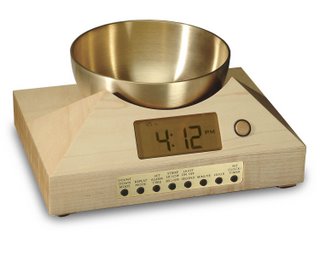 Zen Timepiece by Now & Zen Now & Zen’s Yoga Timer and Alarm Clock Shop
1638 Pearl St.
Boulder, CO 80302
(800) 779-6383
Adapted from Yoga Journal.com
Posted in Chime Alarm Clocks, yoga, Yoga Timer, Yoga Timers by Now & Zen
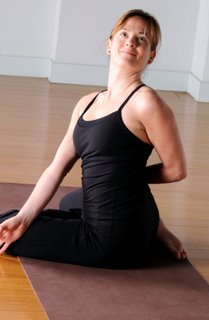 calm your mind with a mindfulness practice Calm Your Mind
Most stress-reduction techniques will help relieve moderate anxiety, says Edmund J. Bourne, Ph.D., a psychologist practicing in Hawaii and California and the author of Natural Relief for Anxiety (New Harbinger Publications, 2004). This can include abdominal breathing, yoga, tai chi, guided visualizations, or even just taking a break two or three times every day to relax, take a walk, or imagine yourself in a peaceful place. Set your Zen Meditation Timer anyplace or anytime for just 5 minutes a day so that you can calm your mind.
Mindfulness-based meditation, which has proved especially helpful in reducing anxiety, is now being taught in many hospitals and health centers across the country. Studies have found that, among other benefits, it can lower breathing rate, reduce levels of the stress hormone cortisol, and increase activity in the left frontal area of the brain, which is associated with a positive mental state and lowered anxiety levels. In fact, a recent Canadian study of cancer patients who participated in a mindfulness-based stress-reduction program found that levels of cortisol and pro-inflammatory chemicals continued to drop for six months to a year afterward.
Mindfulness practice also helps you notice your thoughts and feelings without judging them. “Mindfulness means accepting whatever you may notice around you and not trying to analyze it,” Duke University’s Brantley says.
After she left New York for North Carolina, Miller discovered the Duke Mindfulness program and found it to be invaluable. She attended group sessions and learned how to practice the meditations. The time she spent paying attention to her breathing or visualizing something peaceful improved her concentration at work and allowed her to reduce her dose of anti-anxiety medication.
The basics of the meditation (listening to your breath or paying specific attention to various parts of your body) are simple and can be learned from books—such as Full Catastrophe Living (Delta, 1990) and Wherever You Go, There You Are: Mindfulness Meditation in Everyday Life (Hyperion, 2005), both by Jon Kabat-Zinn, Ph.D., founding director of the Stress Reduction Clinic at the University of Massachusetts Memorial Medical Center. “The important thing is to make mindful practice a part of your life so you’ll be prepared when a stressful situation arises,” Brantley says.
Our Zen Timepiece’s acoustic 6-inch brass bowl-gong Meditation Timer & Clock is the world’s ultimate alarm clock, practice timer, and “mindfulness bell.”
adapted from Natural Solutions Magazine by Ben Kallen
 Zen Timepiece with Brass Singing Bowl, a Meditation timer to Calm your Mind Now & Zen’s Bowl-Gong Timer Store
1638 Pearl Street
Boulder, CO 80302
(800) 779-6383
Posted in Bamboo Chime Clocks, Chime Alarm Clocks, intention, Meditation Timers, Meditation Tools, mindfulness practice, yoga, Yoga Timer, Yoga Timers by Now & Zen, Zen Timers
« Previous Page — « Previous Entries
Next Entries » — Next Page »
|
|
|
|